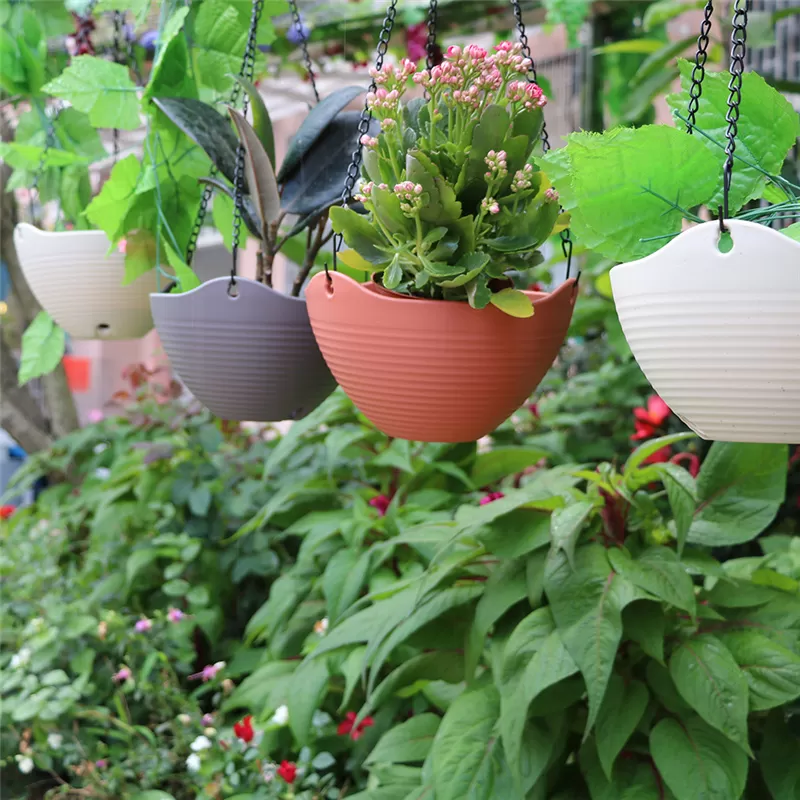Tips for Maintaining Hanging Flower Pots Indoors
When it comes to adding a touch of nature and beauty to your indoor living space, hanging flower pots are a fantastic choice. They not only enhance the aesthetics of your home but also bring a breath of fresh air into your environment. However, maintaining hanging flower pots indoors requires some careful attention to ensure your plants thrive. In this comprehensive guide, we'll share expert tips and insights to help you maintain hanging flower pots indoors successfully.
Choosing the Right Location
Selecting the Ideal Spot
The first step in maintaining hanging flower pots indoors is to choose the right location. The location you choose plays a vital role in the overall health and growth of your plants. Consider these factors:
Light Conditions: Different plants have varying light requirements. Ensure your hanging flower pots receive the appropriate amount of light based on the type of plants you have. For example, some plants thrive in bright, indirect light, while others prefer more shade.
Temperature: Maintain a consistent room temperature for your indoor plants. Avoid placing your hanging pots near heating or cooling vents, as extreme temperature fluctuations can stress your plants.
Air Circulation: Proper airflow is crucial for preventing issues like mold and mildew. Ensure there is sufficient air circulation around your hanging pots.
Humidity Levels: Depending on the plant species, you may need to monitor and control humidity levels. Some plants thrive in higher humidity, while others prefer drier conditions.
Choosing the Right Plants
Selecting the Perfect Indoor Plant
The choice of plants for your hanging flower pots is critical for their well-being. Here's what you should consider:
Plant Varieties: Opt for indoor plants that are well-suited for hanging pots. Some popular choices include pothos, spider plants, and Boston ferns. Research the specific requirements of each plant to ensure they are a good fit for your indoor space.
Size Matters: Consider the mature size of the plants you select. Ensure that your hanging pots have enough space to accommodate the growth of the plants without overcrowding.
Maintenance Level: Assess your commitment to plant care. Some plants are more low-maintenance than others. If you're a beginner, start with plants that are forgiving and easy to care for.
Pot Selection and Setup
Choosing the Right Hanging Pots
The type of Plant Hanging Flower Pot you choose is essential to the health of your indoor plants. Consider these factors:
Drainage: Ensure that your hanging pots have adequate drainage holes to prevent overwatering. Excess moisture can lead to root rot and other issues. Use a saucer or a liner to catch excess water.
Soil Selection: Select a high-quality potting mix suitable for the plant species you've chosen. Different plants have different soil requirements. Make sure your soil choice provides good aeration and drainage.
Pot Size: Choose pots that are appropriately sized for the plants you intend to grow. A too-small pot can restrict root growth, while a too-large pot can lead to overwatering and soil depletion.
Secure Hanging Mechanism: Ensure your hanging pots are securely attached to the ceiling or wall. The weight of the pot and the plant can be substantial, so it's crucial to have a reliable hanging mechanism in place.
Watering and Fertilizing
Proper Watering and Fertilization
Maintaining the right moisture levels and providing essential nutrients are key to the success of your indoor hanging pots:
Watering Schedule: Develop a consistent watering schedule but adjust it based on the specific needs of your plants. Use your finger to test the soil moisture – if it's dry to the touch about an inch deep, it's time to water.
Fertilizing: Indoor plants require regular feeding. Use a balanced liquid fertilizer, following the instructions on the label. Typically, you'll fertilize your plants every 4-6 weeks during the growing season.
Avoid Overwatering: Overwatering is a common issue with indoor plants. Ensure that your pots have proper drainage and empty the saucers after watering to prevent waterlogging.
Pruning and Maintenance
Regular Pruning and Care
To maintain the health and aesthetics of your Flowers Pots, make pruning and maintenance a part of your routine:
Pruning: Regularly trim dead or yellowing leaves, and pinch back leggy growth to encourage bushier, healthier plants.
Pest Control: Keep an eye out for pests and treat them promptly. Common indoor plant pests include spider mites, mealybugs, and aphids.
Repotting: As your plants grow, they may outgrow their pots. When the roots become crowded, consider repotting into a larger container.
In conclusion, maintaining hanging flower pots indoors is a rewarding experience that can enhance your living space and improve air quality. By choosing the right location, selecting suitable plants, and paying attention to details like pot selection and watering, you can ensure your indoor plants thrive. Regular care, including pruning and pest control, is essential for long-term success. With these tips, you can enjoy the beauty and benefits of indoor hanging flower pots and create a welcoming, green oasis in your home.
548
0
0



Comments
All Comments (0)